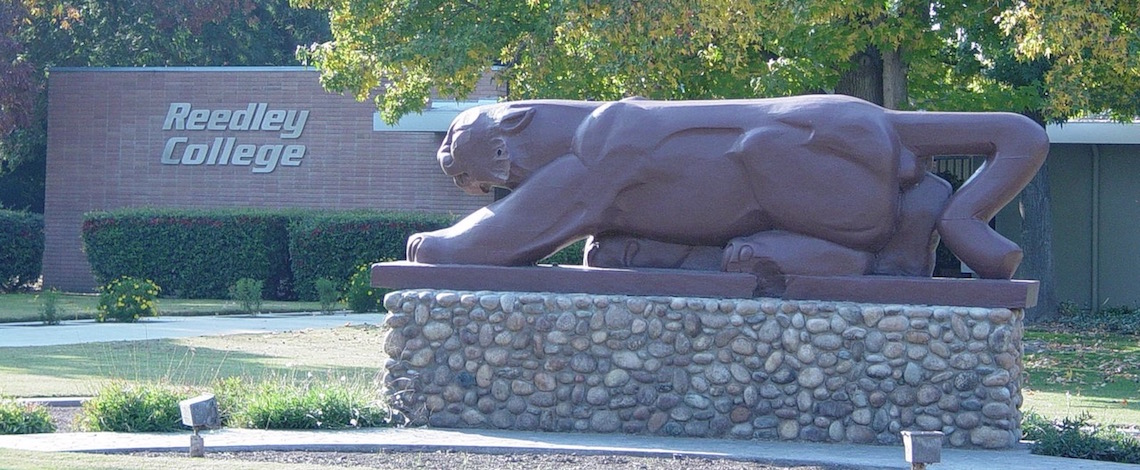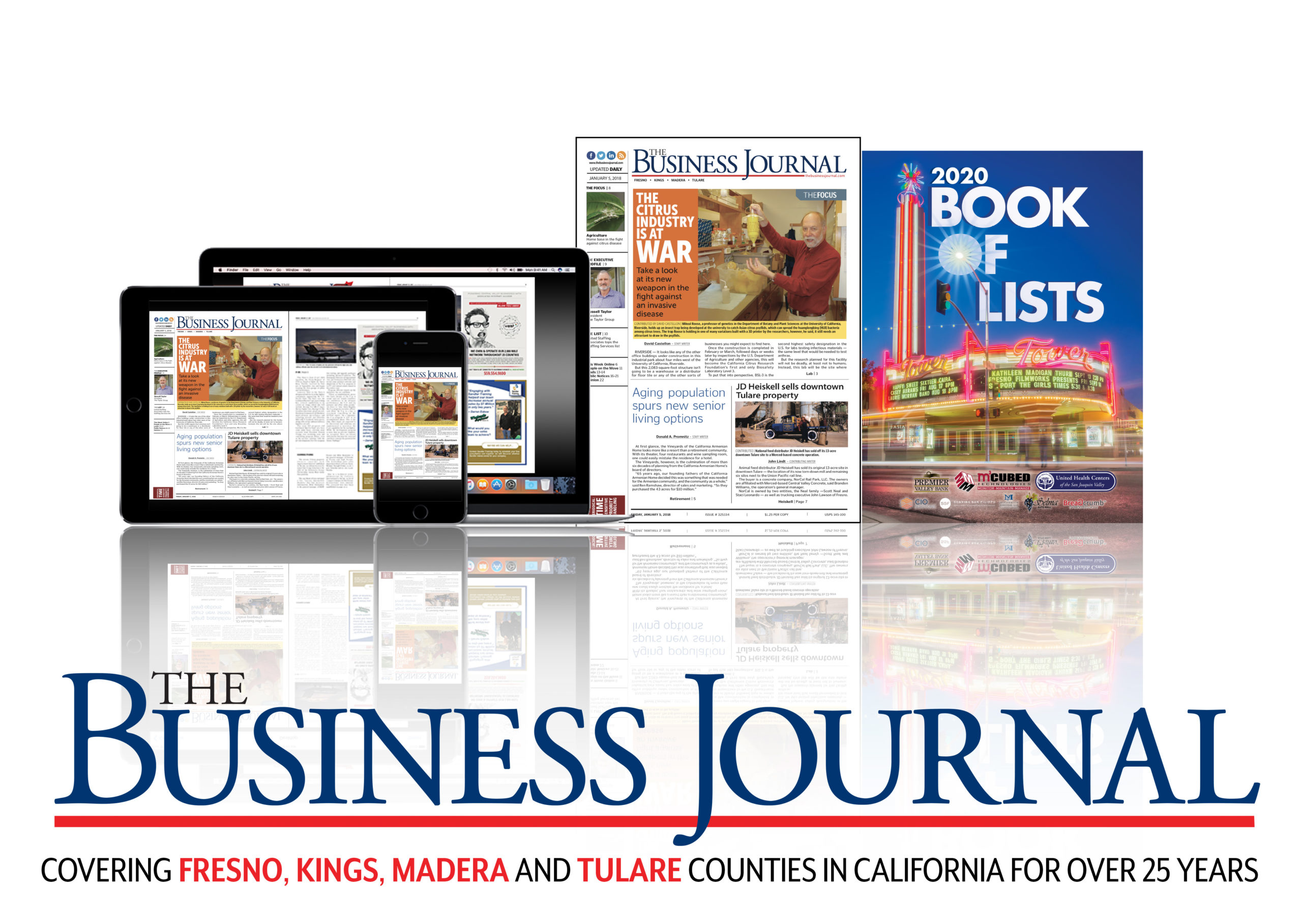
Reedley College file photo
Written by Alex Scott
An October report from the National Student Clearinghouse Research Center found that fall enrollment at community colleges is essentially flat — declining by 0.4%.
At first glance this may be cause for concern, but in fact it is an encouraging sign that enrollment numbers are on their way to reaching pre-pandemic levels.
According to the State Center Community College District (SCCCD) Chancellor Carole Goldsmith, when you look at this statistic from a local angle, the results look much different.
While community colleges are typically funded largely based on enrollment, the funding rules have been suspended and the district won’t feel the economic impact of revenue loss until 2025. If the district doesn’t recover by then, it will be facing a fiscal cliff.
As of January, the colleges of SCCCD have not fully recovered from the pandemic-related enrollment decline. The last two years of the pandemic decimated pre-pandemic enrollment gains. Enrollment generates 70% of the district’s revenue, and when comparing this spring to the pre-pandemic term, the district is down more than 2,000 full-time equivalent students (FTES) and over 4,000 for a year.
Despite this, enrollment has grown 15.5% above what it was since the pandemic drop two years ago.
As a largely agriculture-based community, the district operates on different parameters in terms of measuring enrollment numbers. Since the SCCCD serves a more rural population, it relies on feeder schools as well as K-12 schools.
Since the pandemic the district noticed many high school students weren’t completing their journey, but now that number is starting to decrease as more high school students are completing their education.
The district also serves a large population of working adults who are trying to retool their skills or start a new career path as well as those returning to finish a degree from years ago.
“Community colleges have been serving as an economic engine for years, so I suspect we’ll continue to see those trends as the economy gets a little tight and people are going to want to reinvent themselves,” said Goldsmith.
Goldsmith also explained that first responders and flight science students are in incredibly high demand.
Even though the district is recovering in terms of revenue, growth in these programs is a positive sign.
Taking a more centralized look, Reedley College is excelling in terms of growth. The college exceeded its FTES for the last three quarters, meeting 101% of its target for fall 2022, 103% for spring 2023, and 110% for summer 2022. Based on this data, the college is at 425 FTES above last year’s actual enrollment.
Reedley College President Dr. Jerry Buckley, attributes this to multiple recovery solutions including the following:
- Student centered scheduling: By providing more afternoon, evening, and weekend classes the college is able to reach a wider demographic of students who may not be able to attend classes due to working full time by providing them with a more flexible class schedule.
- Launching of an adult student oriented noncredit program: In fall 2022, the college launched 150 courses to help with credentialing to help increase job skills for adults who wish to move up in their career or transition to a new field. As part of the program, the college will construct a Pearson VUE skills testing center where, upon completion of the course(s), students will test and receive certification in their chosen area of study.
- Enhanced dual enrollment and high school enrichment opportunities: The addition of new guided pathways to associate and baccalaureate degrees will help simplify access to college and make the transition more seamless.
- Enhanced distance education program: Reedley College increased offerings to students who are unable to attend in person by providing more options for hybrid and online courses as well as asynchronous courses. The college has also increased the faculty pool to help with the increased number of courses.
- Department of Commerce EDA Grant: Reedley College competed and won an EDA grant that will help the college launch a nine-unit Agriculture Technology certificate that would help provide students and others in the community a background in STEM.
Reedley College is also working to establish transfer centers on high school campuses in the area staffed with counselors from both the college and the high school to help students transition into college in a more personalized approach.
“We want to hear their dreams and figure out how to match what we’ve got with what they’d like to do,” said Buckley.
Fresno City College President Robert Pimentel says that even though the district is starting to see growth, there is still one group that seems to not be enrolling as much as their peers — young men of color.
“This is a trend we’ve been seeing for a while, but it wasn’t as bad as it is,” said Pimentel.
Last year SCCCD started the Chancellor’s Commission on the Engagement of Young Men to combat this phenomenon.
The primary charge of this commission was to provide expert advice to the Chancellor on how to improve policies and procedures related to declining college participation among men enrolled at SCCCD.
The gender gap in college has been growing for decades, with the latest data showing that women make up 57% of U.S. undergraduates. The pandemic only widened this gap. According to the National Clearinghouse, in fall 2020 male undergraduate enrollment fell nearly 7%, nearly three times as much as female enrollment dropped.
Similarly, the gender gap at SCCCD also dropped since the pandemic from 43.6% of all students in fall 2019 to 39.9% in the fall of 2021.
According to Pimentel, the gender gap means there are many occupations primarily led by men that are now shrinking — a factor that leads to employers not moving to the area.
“We already don’t have trained employers attracted to the area, so that’s exacerbating that,” said Pimentel. “You cannot attract big employers, big industry partners to the area if you don’t have a trained workforce.”
The good news is that through increased peer mentoring, increased dual enrollment at local high schools and a series of resolutions passed by the board called ‘Connection to Community,’ enrollment for young men of color has gone up to 41.3% as of last fall.
Despite the district showing signs of recovery from the enrollment drop, the district still has some work to do to get back to pre-pandemic numbers and Goldsmith hopes that students will take advantage of the opportunities in front of them.
“For many students who may be questioning the benefit of going back to college, the investment in yourself and to educate yourself — no one can take that away from you,” said Goldsmith. “So I would just encourage people to take that investment and invest the time for themselves.”








